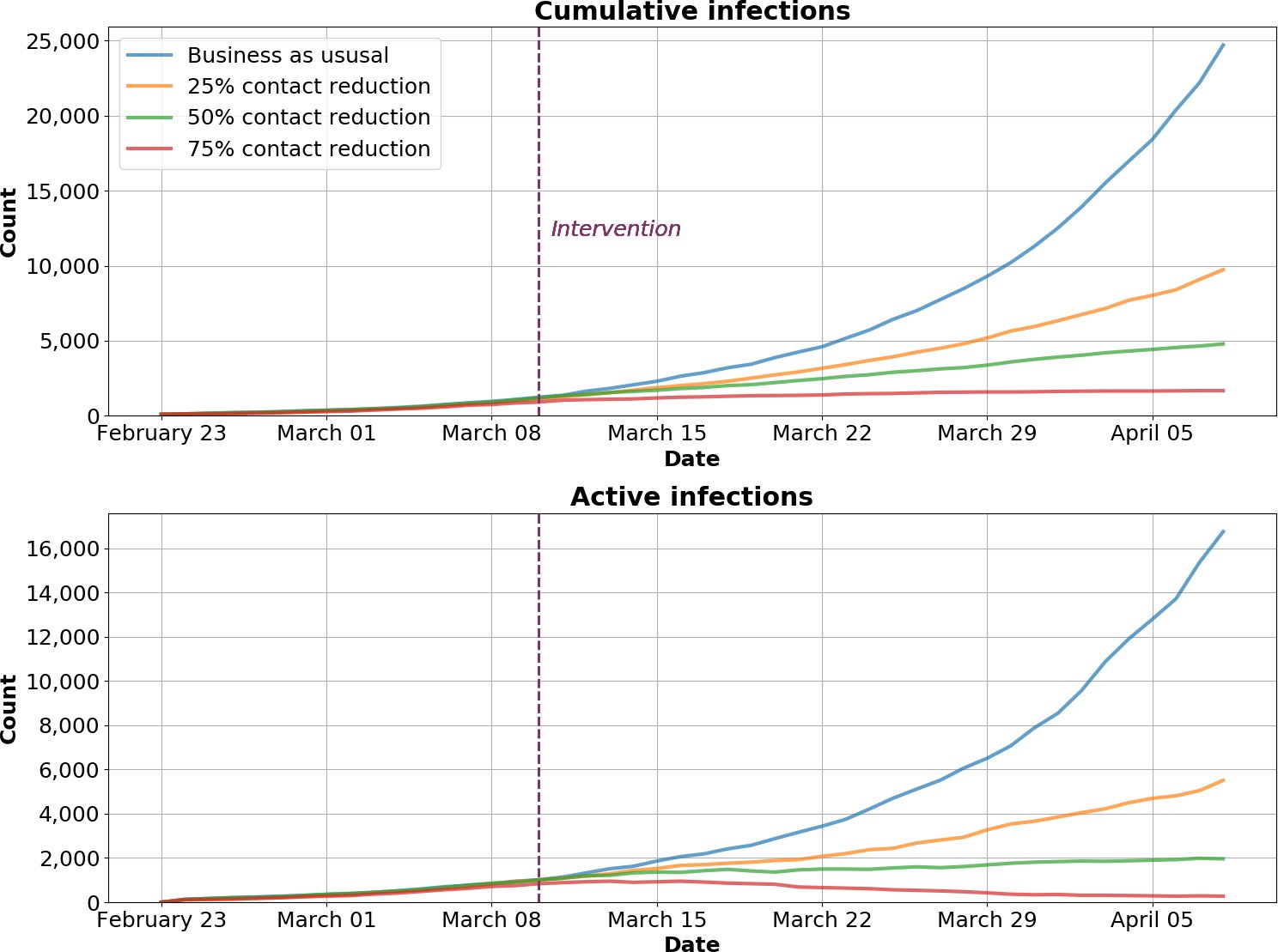As coronavirus has spread, Americans have become more familiar with the term “social distancing,” a reference to the cancellation of events, closure of schools, and migration to working at home, meant to minimize human contacts that can more rapidly spread the virus.
As the list of cancellations and closures has piled up, I’ve sensed a growing skepticism among some people who see this as an overreaction. So I thought it would be worth taking a moment to explain why experts say these strategies are absolutely essential if we are to avoid a catastrophe that will overwhelm our medical system and cause a massive death toll.
There are three skeptical questions that seem to come up a lot.
1.) The virus has only affected about 1,300 in a country of 330 million. Isn’t it an overreaction to cancel all these events?
The answer to this is no, it isn’t an overreaction at all, because that number can grow very quickly. Just over two weeks ago, President Trump was talking about how there were only 15 cases in the country, and now we’re at 1,312, or 87 times that amount. Italy, which currently has over 12,000 cases and has now had to be completely shut down, was about where we are now just 12 days ago.
The important thing to keep in mind is that it isn’t just the overall number of cases over time that’s important, but making sure that as few people as possible are sick at the peak of the outbreak. The reason is that the medical system can handle a steady flow of patients. But once the system exceeds capacity, running out of beds and life-saving medical equipment, those with severe symptoms are at much higher risk because they cannot get the care they need. That’s when the fatality rate spiked in China and Italy.
Taking dramatic steps early pays off by slowing down the growth of the virus and reducing the number of cases at the peak, helping to avoid a system-wide collapse.
2.) If the virus is relatively harmless to children, why would we shut down schools?
The problem is that even if children get a mild form of it, they could then interact with somebody older or more vulnerable. An ancillary benefit is that if schools are closed, more parents are likely to work from home and avoid contacts.
3.) Why can’t people just go to large events if they want to take the risk?
This isn’t a case of just the risk to an individual, as in when a person decides to do an extreme sport such as base jumping. If somebody goes to a large event and gets sick, he or she could then transmit that disease to somebody else. Because of the long 14 day incubation period and mild symptoms in a lot of people, those with coronavirus may walk around infecting other people without even knowing they have it.
Now, I promised there would be a chart, and here it is, courtesy of the Institute for Disease Modeling. In a working paper, researchers estimated the potential growth of coronavirus in the coming weeks in two Washington counties that have been hardest hit by the virus. What they found was that if business continued on, as usual, there would be 25,000 cases and 400 deaths by April 7. With a 25% reduction in contacts among people, those numbers drop to 9,700 infections and 160 deaths. If contacts are cut in half, infections drop to 4,800 and deaths to 100. And if there were a more dramatic 75% reduction, there would be 1,700 infections and 30 deaths.

The big dilemma in managing an epidemic is that if you wait until the caseload is massive, it’s too late. So it’s imperative to take action early, even if it may seem premature at the time.

